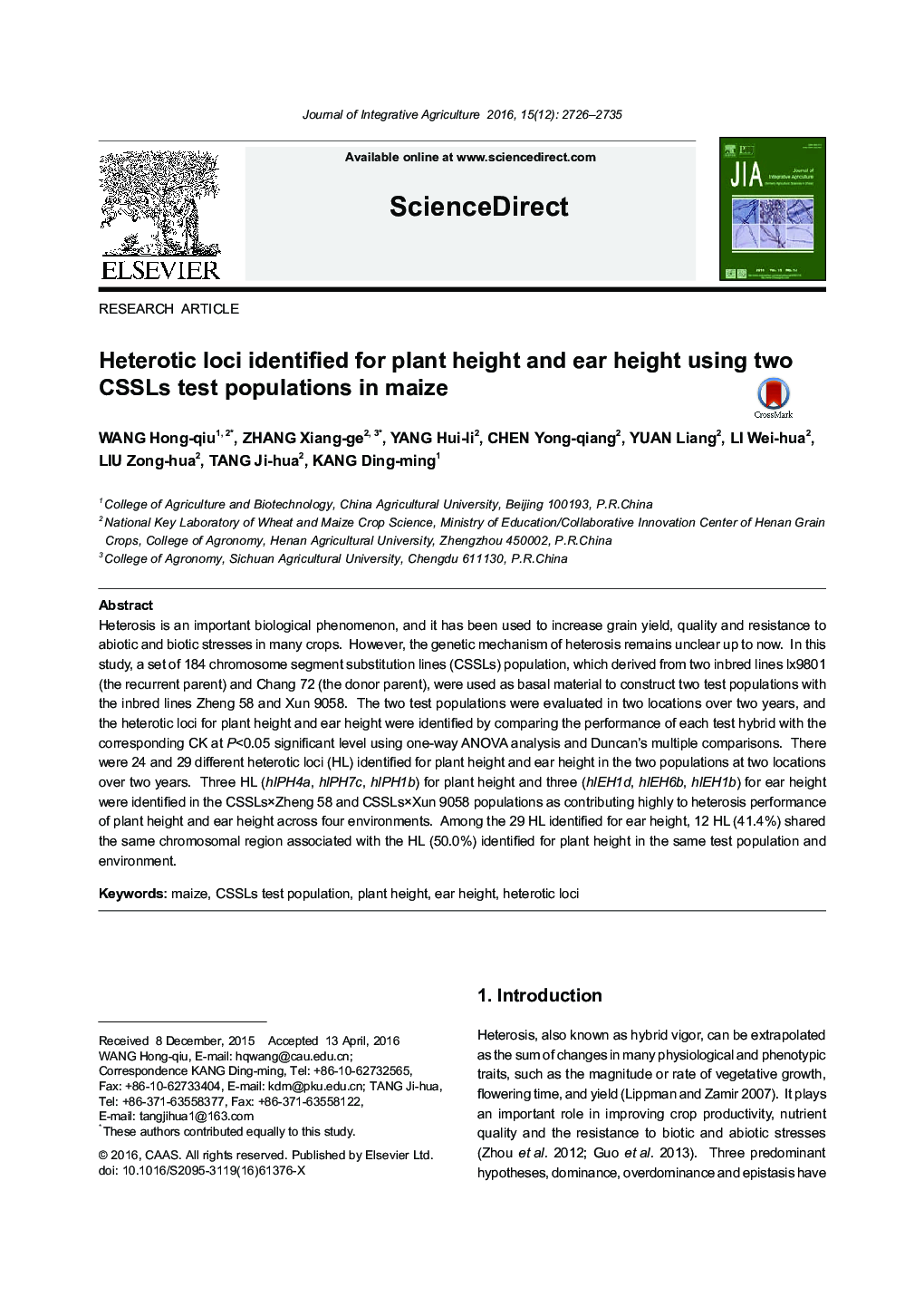| Article ID | Journal | Published Year | Pages | File Type |
|---|---|---|---|---|
| 8876137 | Journal of Integrative Agriculture | 2016 | 10 Pages |
Abstract
Heterosis is an important biological phenomenon, and it has been used to increase grain yield, quality and resistance to abiotic and biotic stresses in many crops. However, the genetic mechanism of heterosis remains unclear up to now. In this study, a set of 184 chromosome segment substitution lines (CSSLs) population, which derived from two inbred lines lx9801 (the recurrent parent) and Chang 72 (the donor parent), were used as basal material to construct two test populations with the inbred lines Zheng 58 and Xun 9058. The two test populations were evaluated in two locations over two years, and the heterotic loci for plant height and ear height were identified by comparing the performance of each test hybrid with the corresponding CK at P<0.05 significant level using one-way ANOVA analysis and Duncan's multiple comparisons. There were 24 and 29 different heterotic loci (HL) identified for plant height and ear height in the two populations at two locations over two years. Three HL (hlPH4a, hlPH7c, hlPH1b) for plant height and three (hlEH1d, hlEH6b, hlEH1b) for ear height were identified in the CSSLsÃZheng 58 and CSSLsÃXun 9058 populations as contributing highly to heterosis performance of plant height and ear height across four environments. Among the 29 HL identified for ear height, 12 HL (41.4%) shared the same chromosomal region associated with the HL (50.0%) identified for plant height in the same test population and environment.
Keywords
Related Topics
Life Sciences
Agricultural and Biological Sciences
Agricultural and Biological Sciences (General)
Authors
Hong-qiu WANG, Xiang-ge ZHANG, Hui-li YANG, Yong-qiang CHEN, Liang YUAN, Wei-hua LI, Zong-hua LIU, Ji-hua TANG, Ding-ming KANG,
